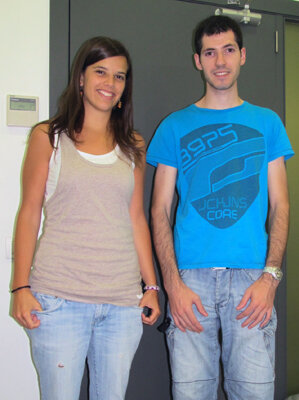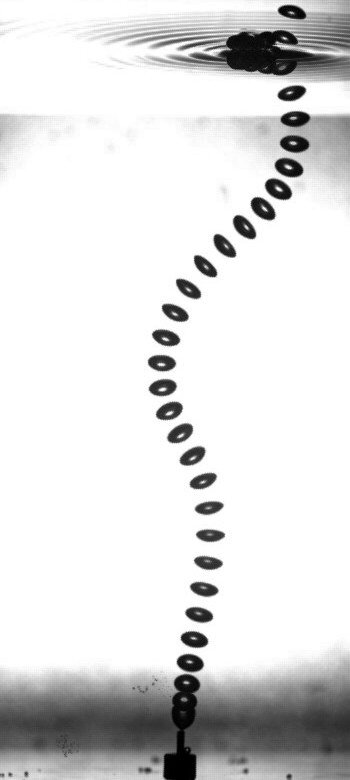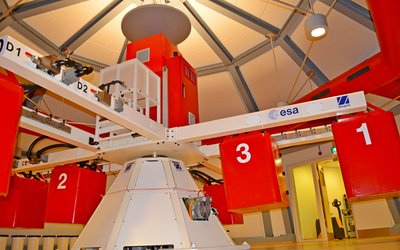Meet the teams: Bubble Movers
Three teams of university students were selected to develop and perform their hypergravity experiments during ESA's Spin Your Thesis! 2012 campaign. Here is an introduction to the Spanish team.
![]()
![]()
Acoustic control of rising bubbles at different gravity levels
![]()
![]()
| University | Universitat Politècnica de Catalunya (UPC) |
| Endorsing professor |
Ricard González Cinca Universitat Politècnica de Catalunya |
| Assistant scientist | Oscar Maldonado |
| Team | Anna Garcia-Sabaté, Roger Farrarons |

The Bubble Movers team is composed of one PhD student and one undergraduate student from the Universitat Politècnica de Catalunya (Spain). They investigated the combined influences of acoustic control and hypergravity on rising bubbles.
Bubbly flows are found in numerous situations, from the familiar example of sparkling water to sophisticated devices like bubble column reactors, which are used to study gas-liquid reactions. A thorough understanding of the behaviour of bubbly flows is required since, in some systems, it is desirable to manage the dynamics of the bubbles.
Sound waves propagated through the liquid medium can be used to influence, and possibly even actively control, the dimensions and dynamics of generated bubbles. Hypergravity also affects the dynamics of rising bubbles, a relationship that was investigated by the BubCoa team from the same laboratory during the Spin Your Thesis! 2011 campaign.

The experimental setup features a 0.8 litre, cubic experimental test chamber filled with either water or ethanol. A needle and a syringe pump were used to inject air into the bottom of the test chamber, creating a rising bubble.
Piezoelectric transducers placed on the walls of the test chamber vibrated to induce a standing acoustic wave in the liquid. These transducers created a standing acoustic wave either parallel or perpendicular to the gravity axis. Two transparent glass walls facilitated backlighting and high-speed video recording of the bubble’s rise and coalescence with the free surface. Footage was taken at various gravity levels from 1-20 g, with acoustic fields applied in either the transverse or axial direction. Image processing of the video data obtained will provide information on the size, shape and path of the rising bubbles.
The experiment is characterised by a combination of the effects of hypergravity and acoustic waves on rising bubbles. One objective is to study the correlation between the applied acoustic field and bubble size and shape. This could lead to a means of controlling the bubbles’ characteristics without modifying the nozzle’s geometry.
Another objective is to use the acoustic field to actively control the bubbles’ rise path, since bubbles are expected to move toward a pressure antinode and follow a path laterally displaced from the axis of the nozzle.
Read the final experiment report here.






